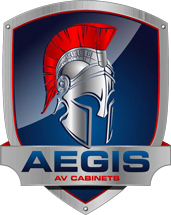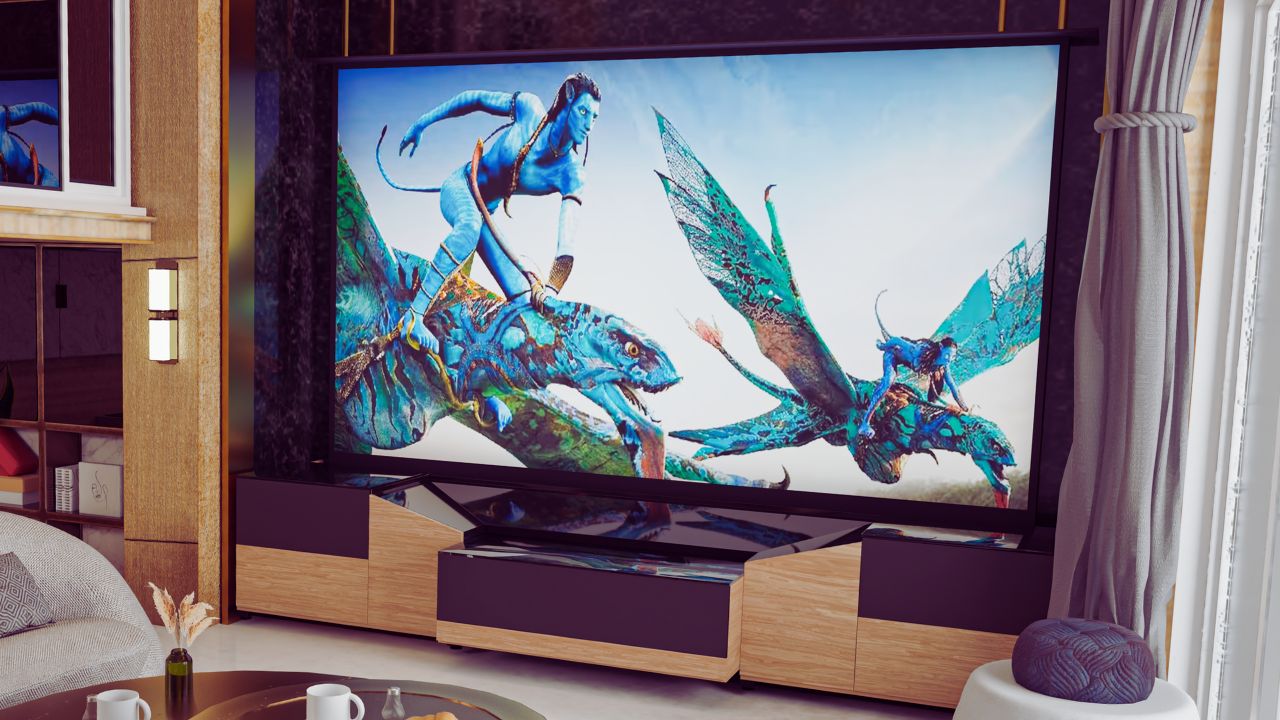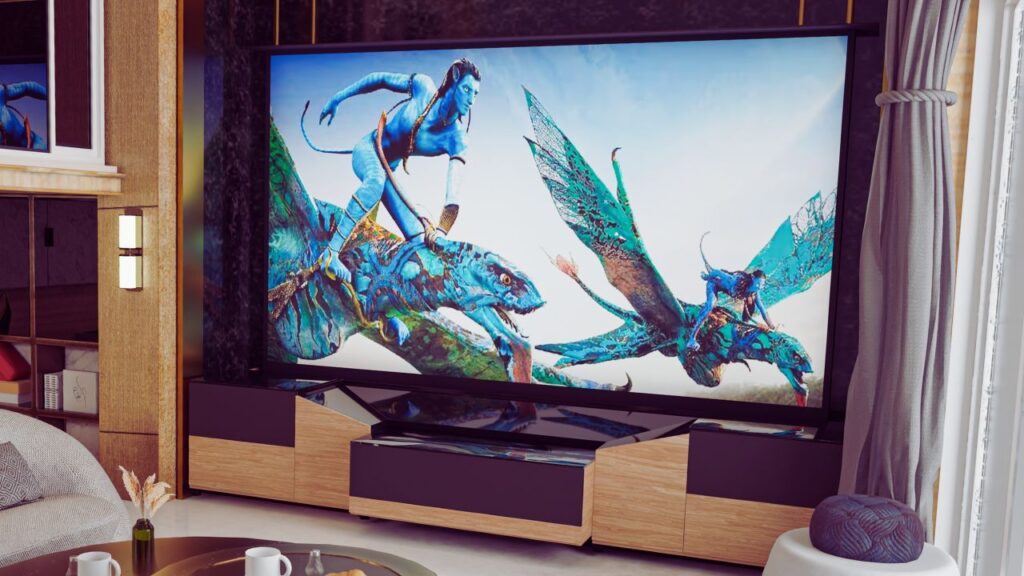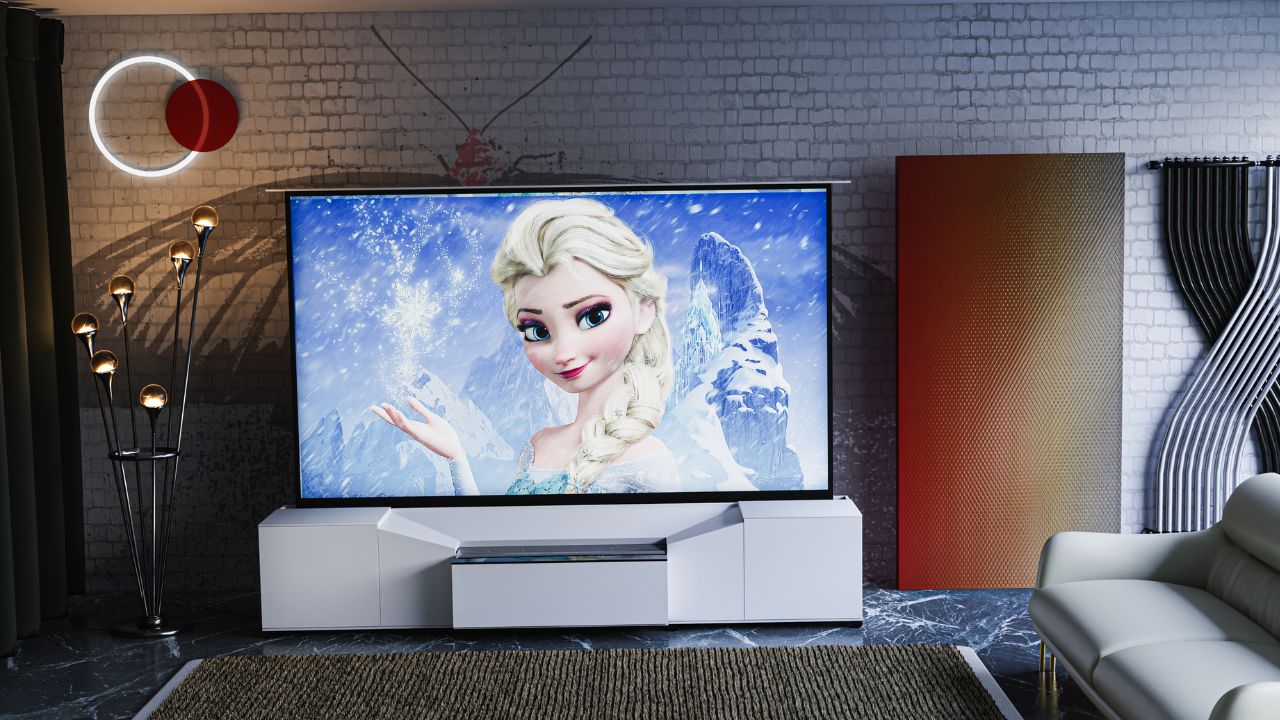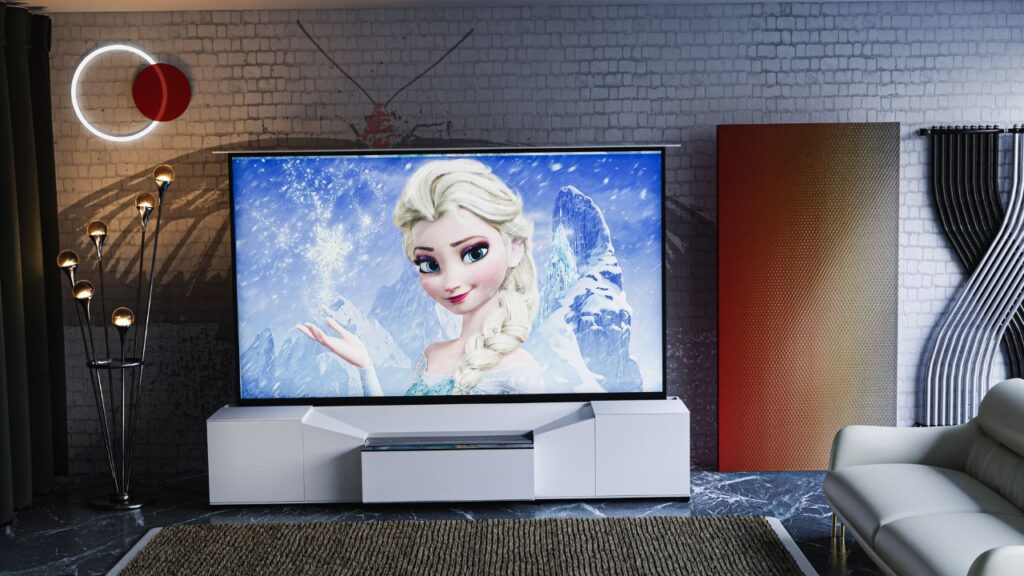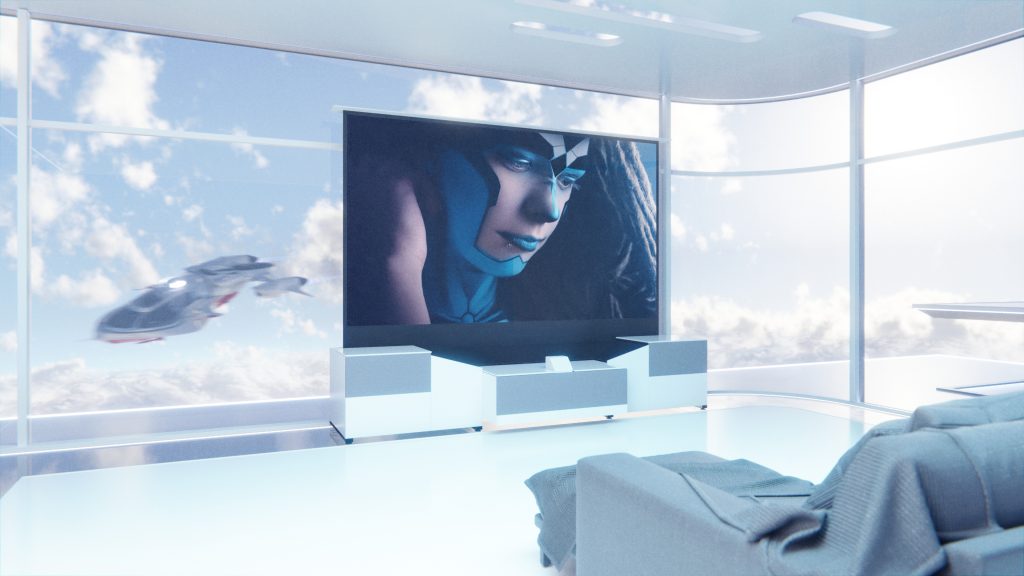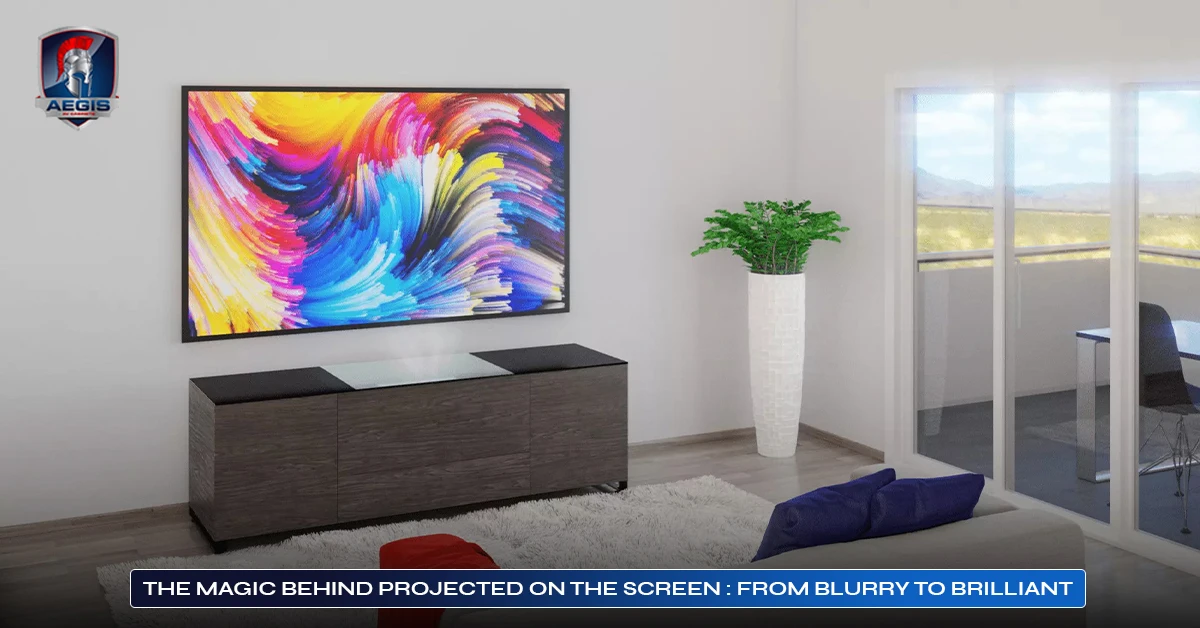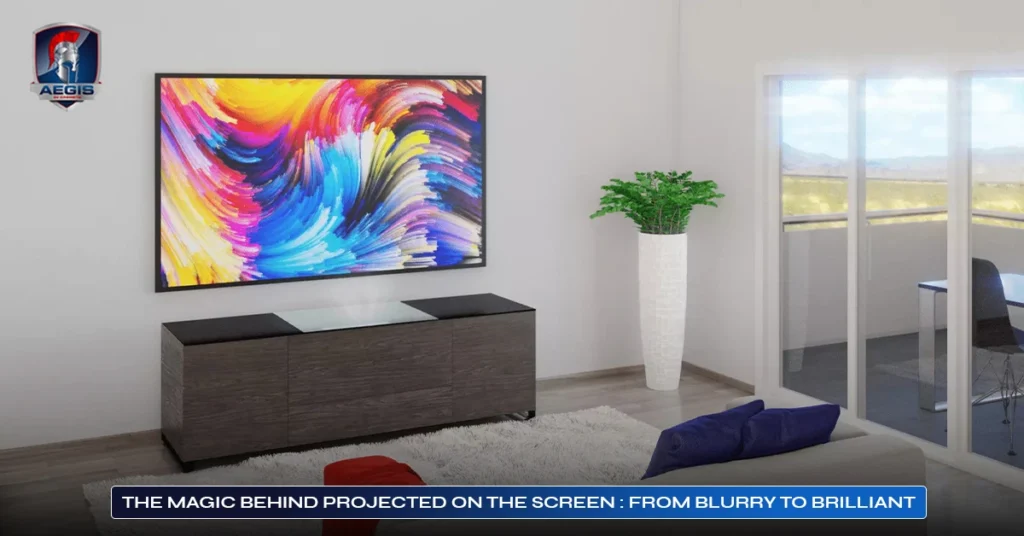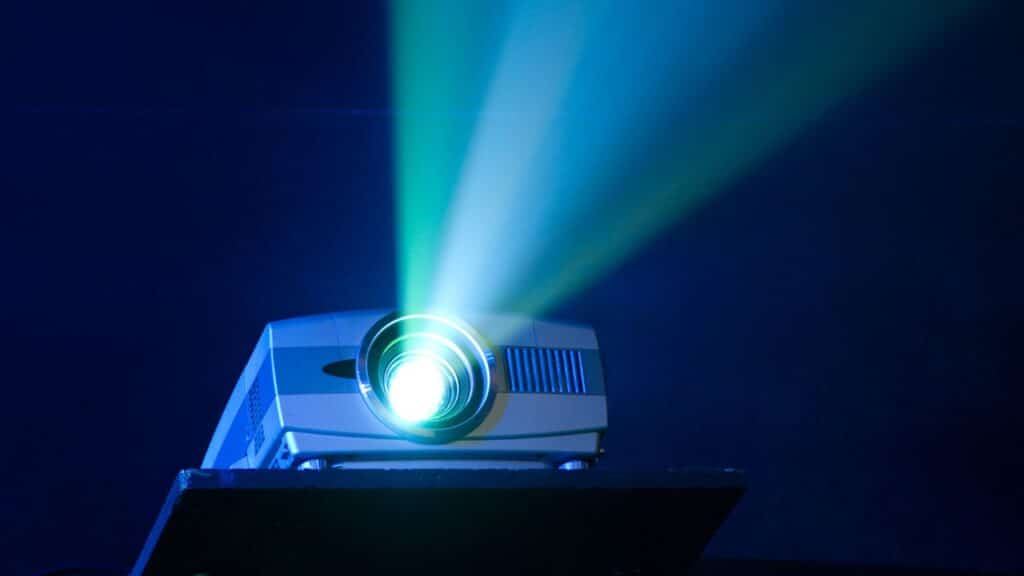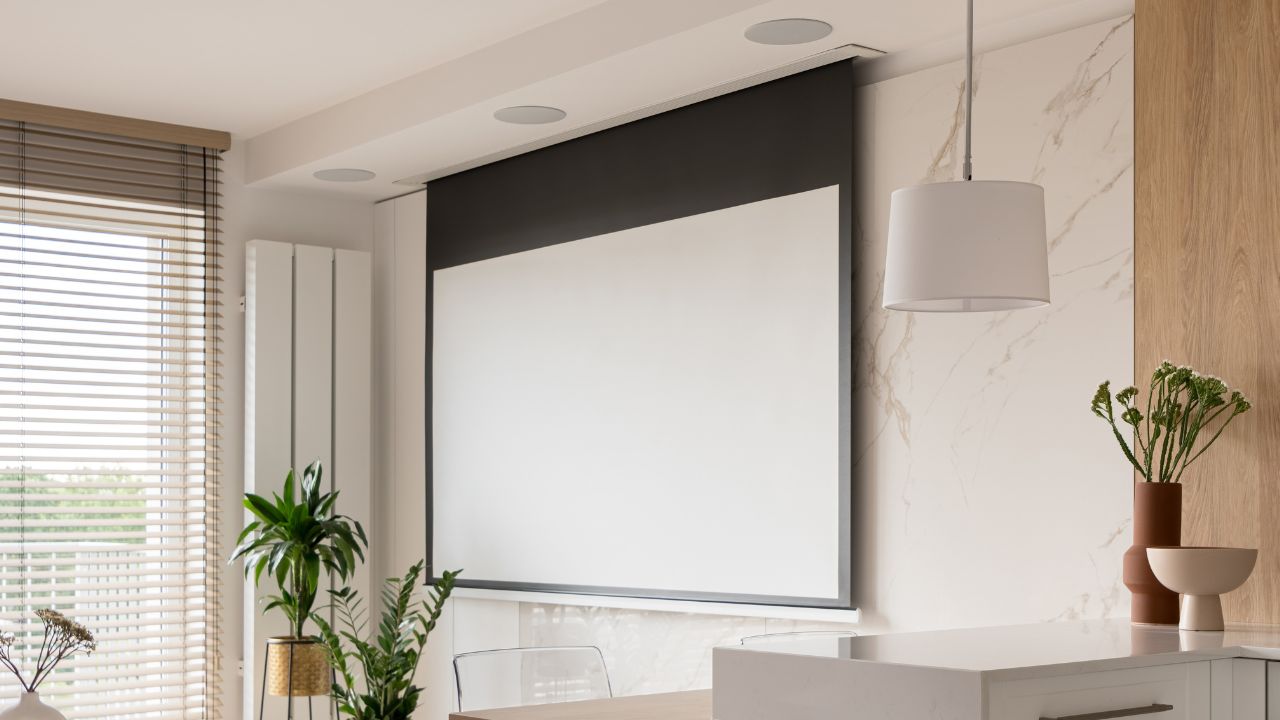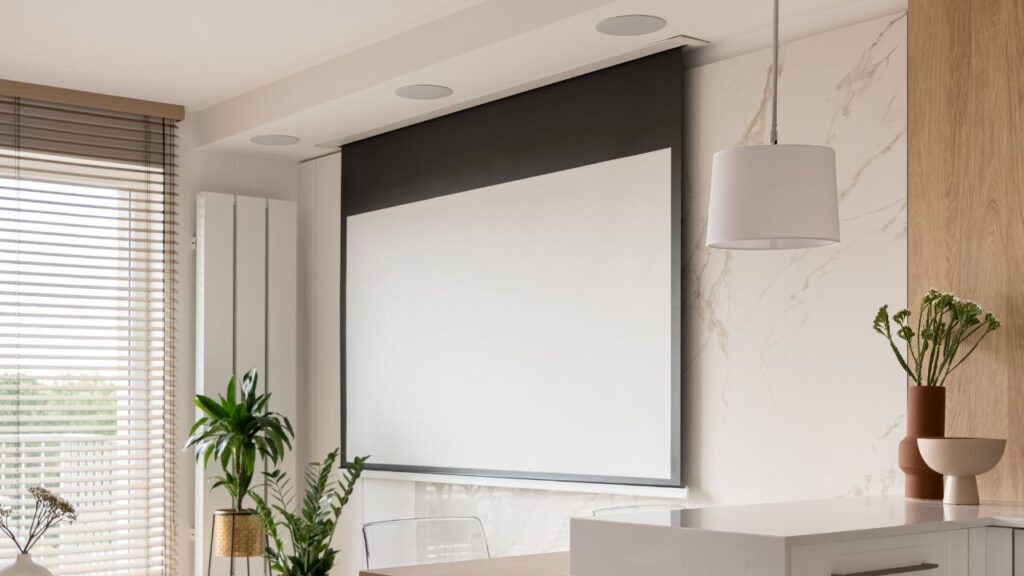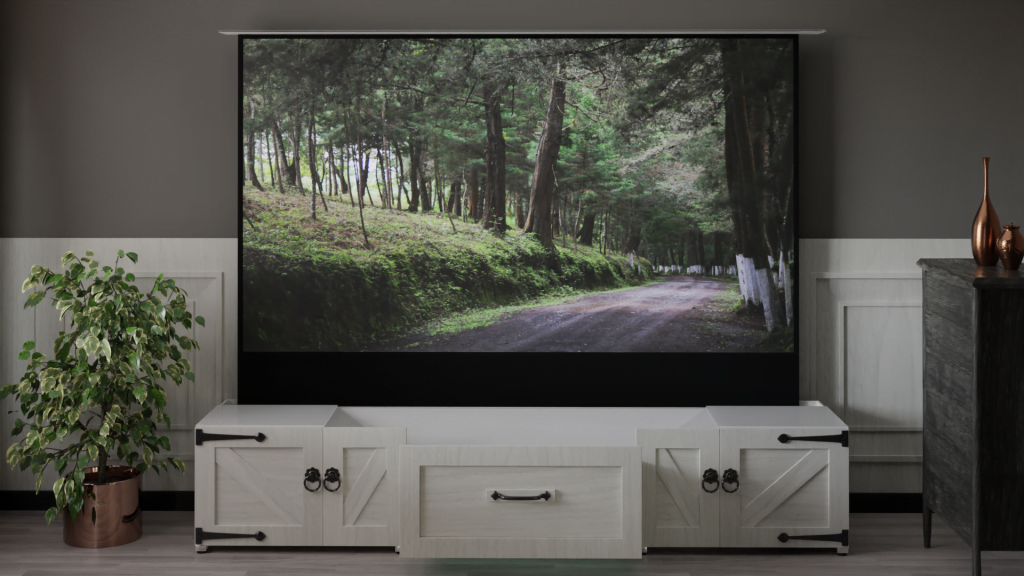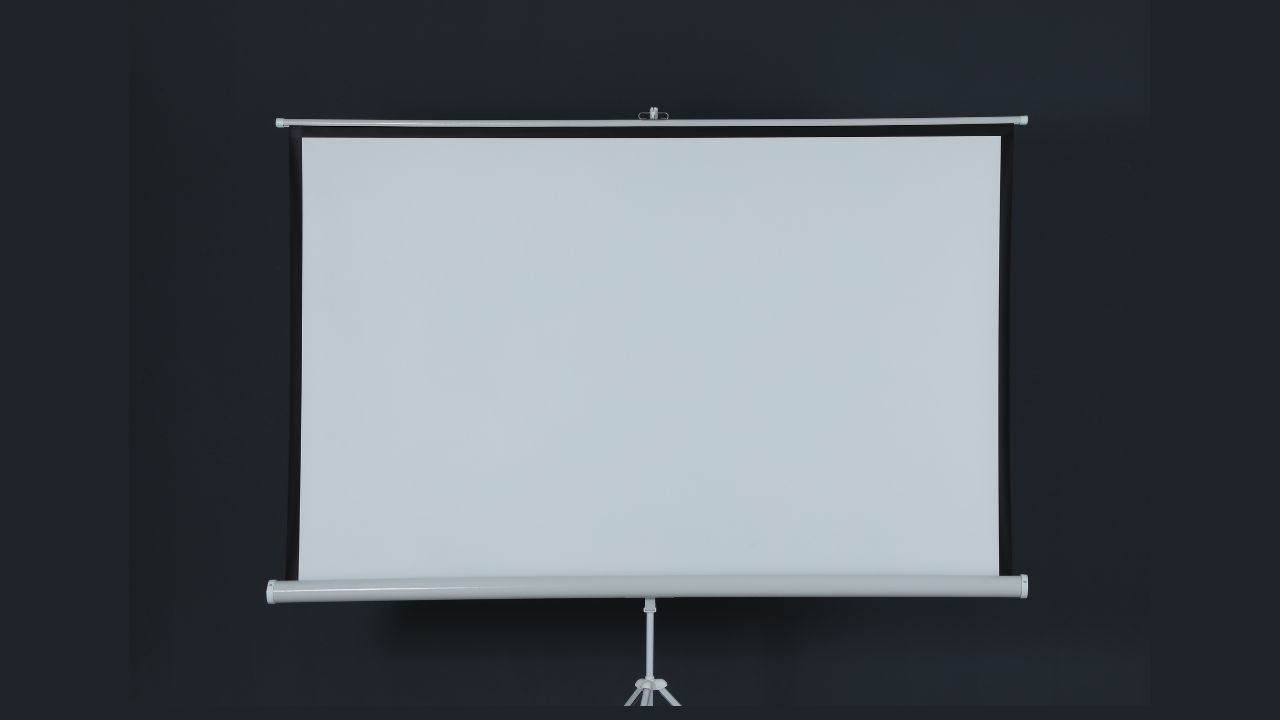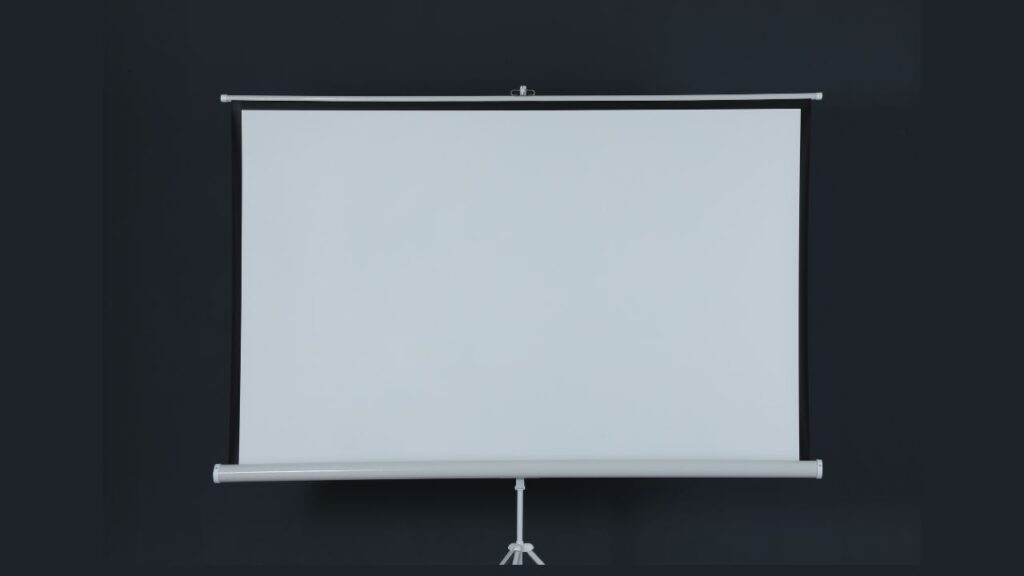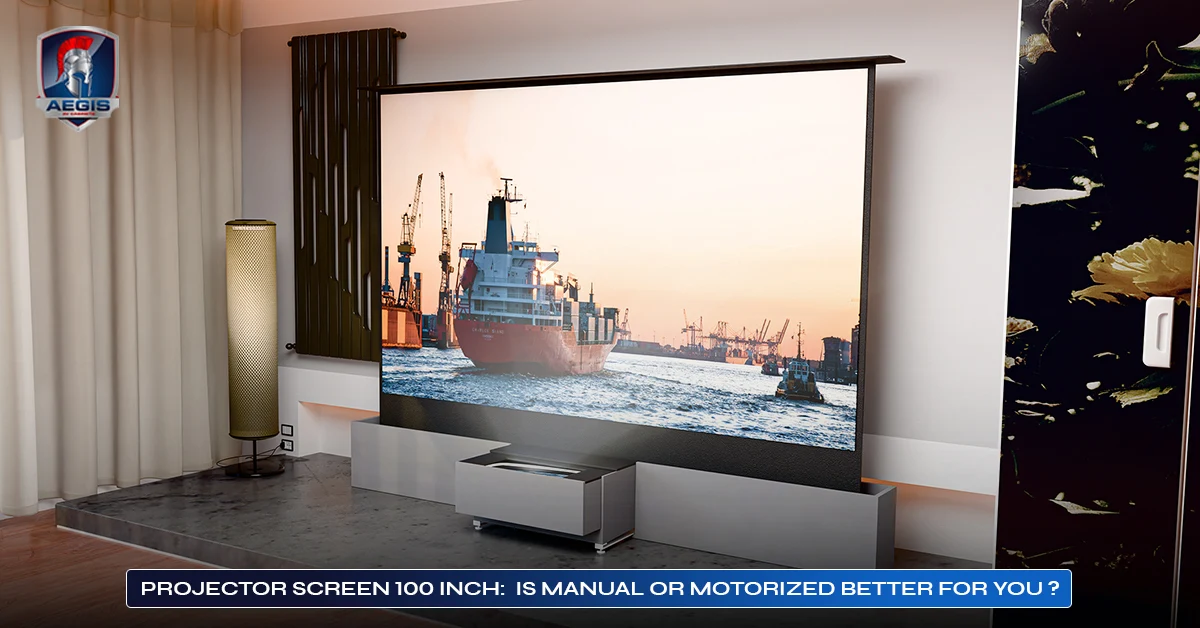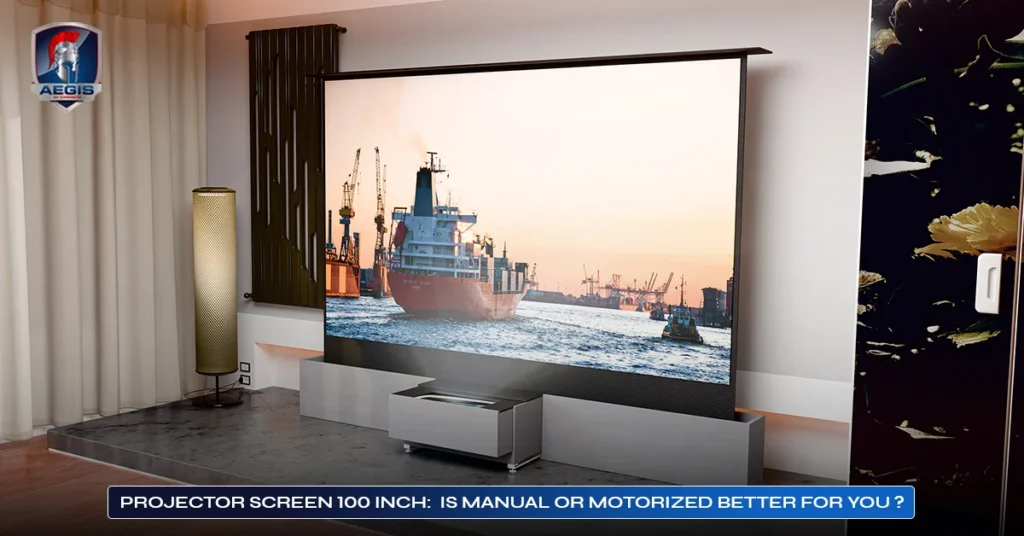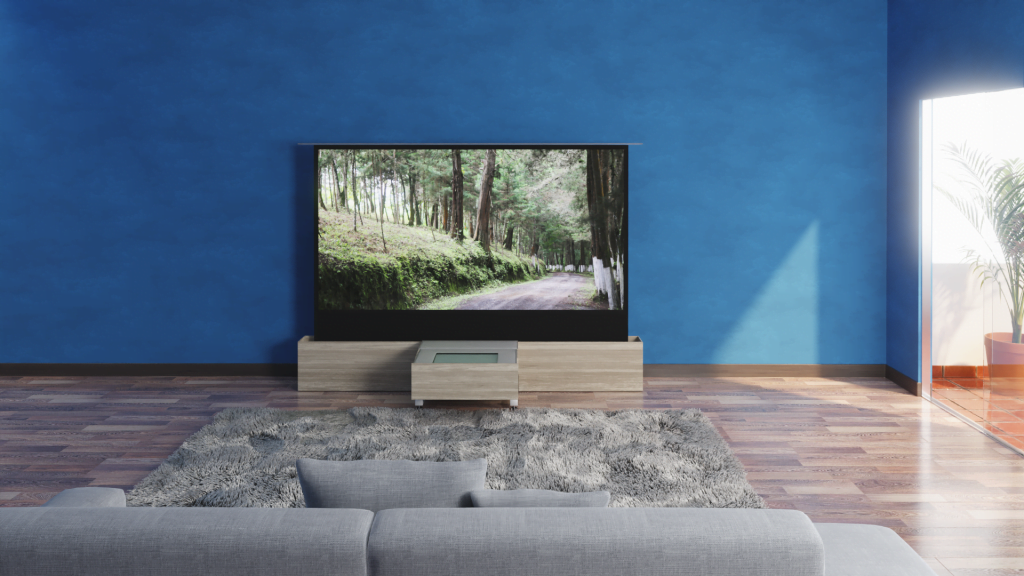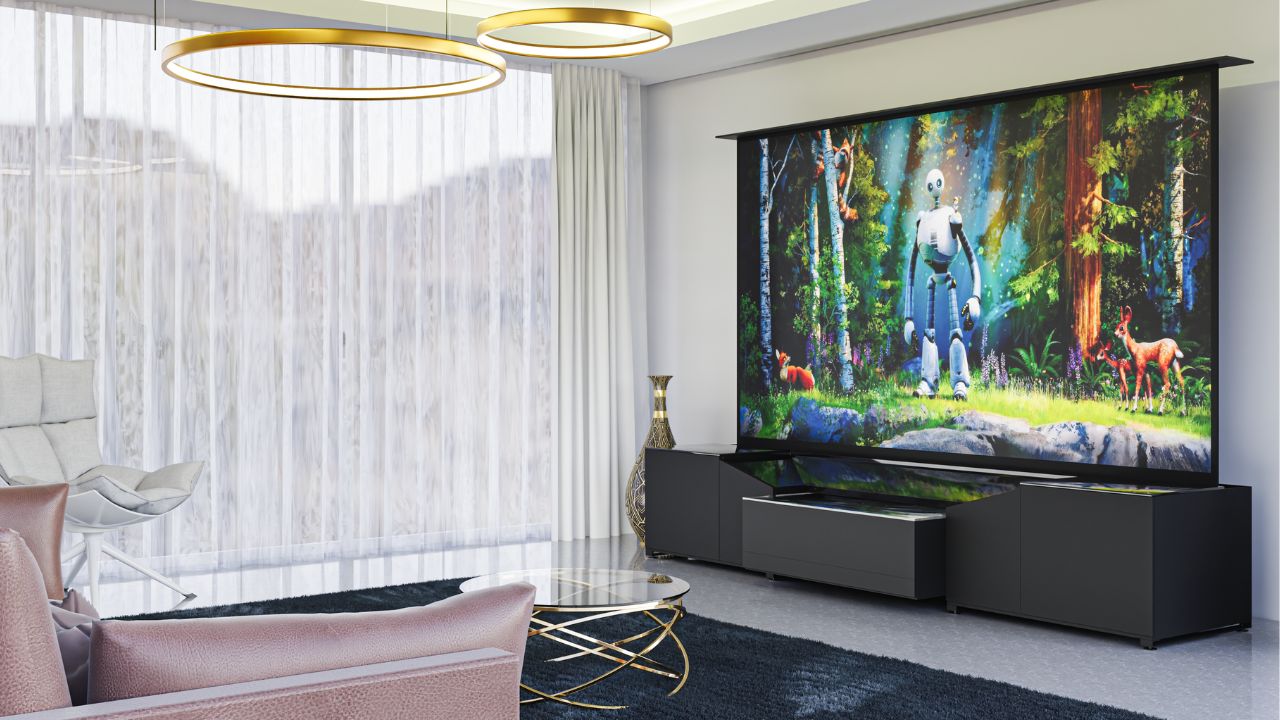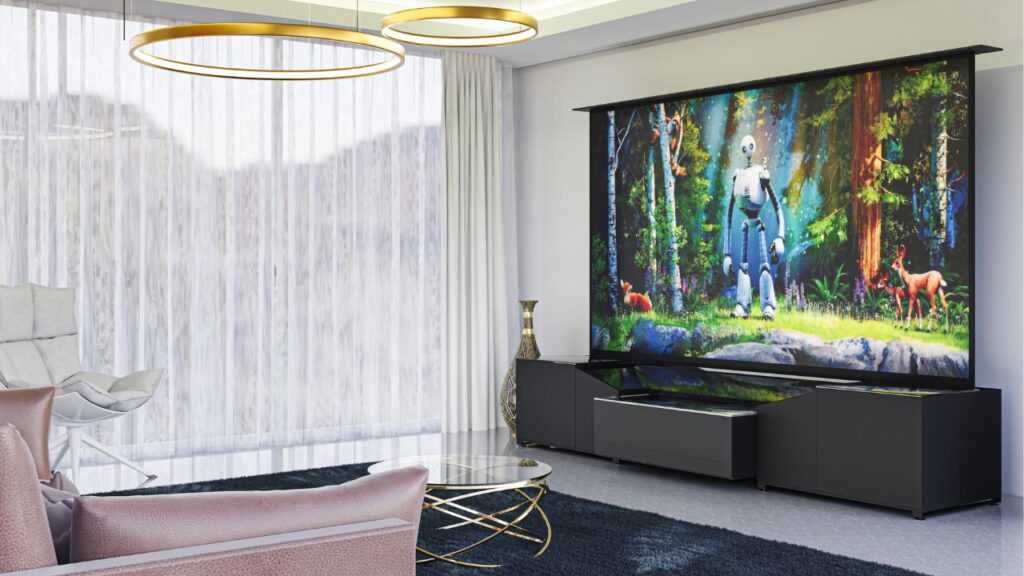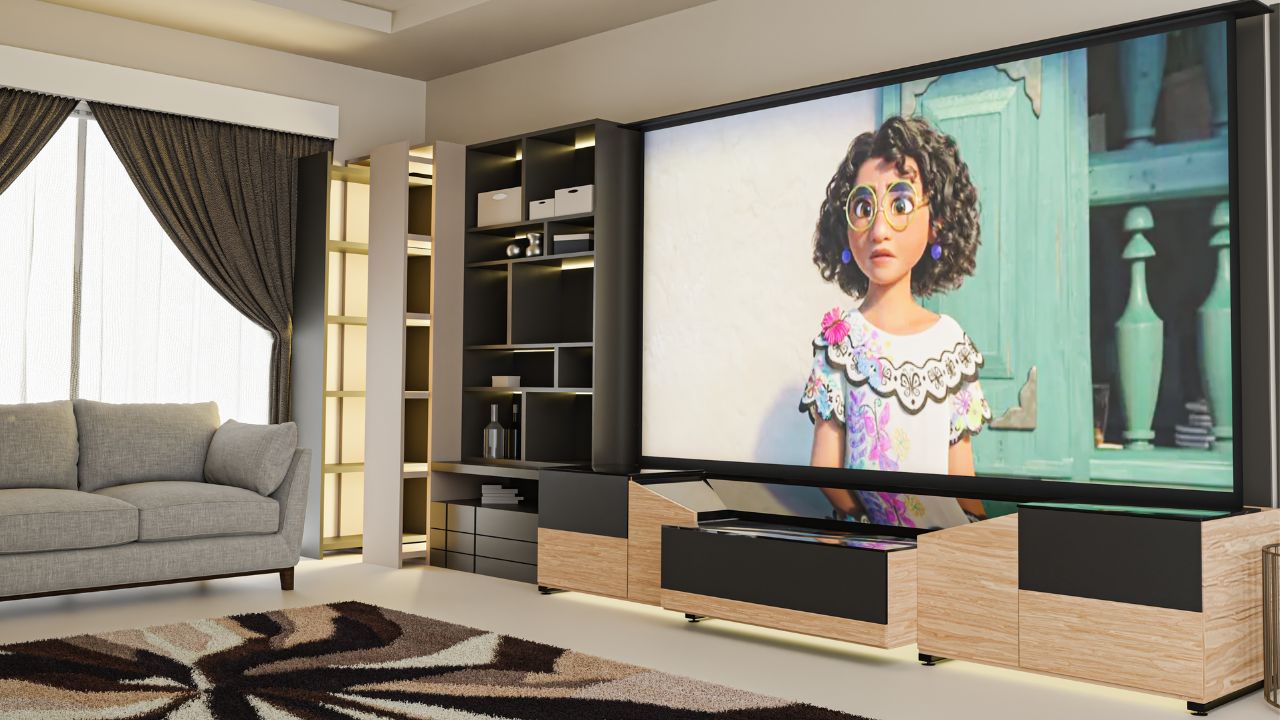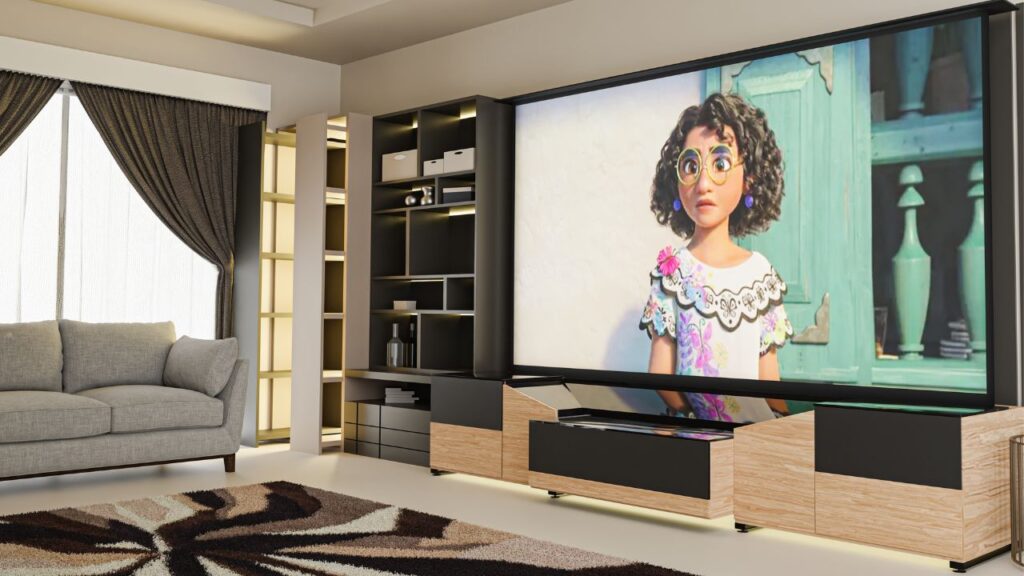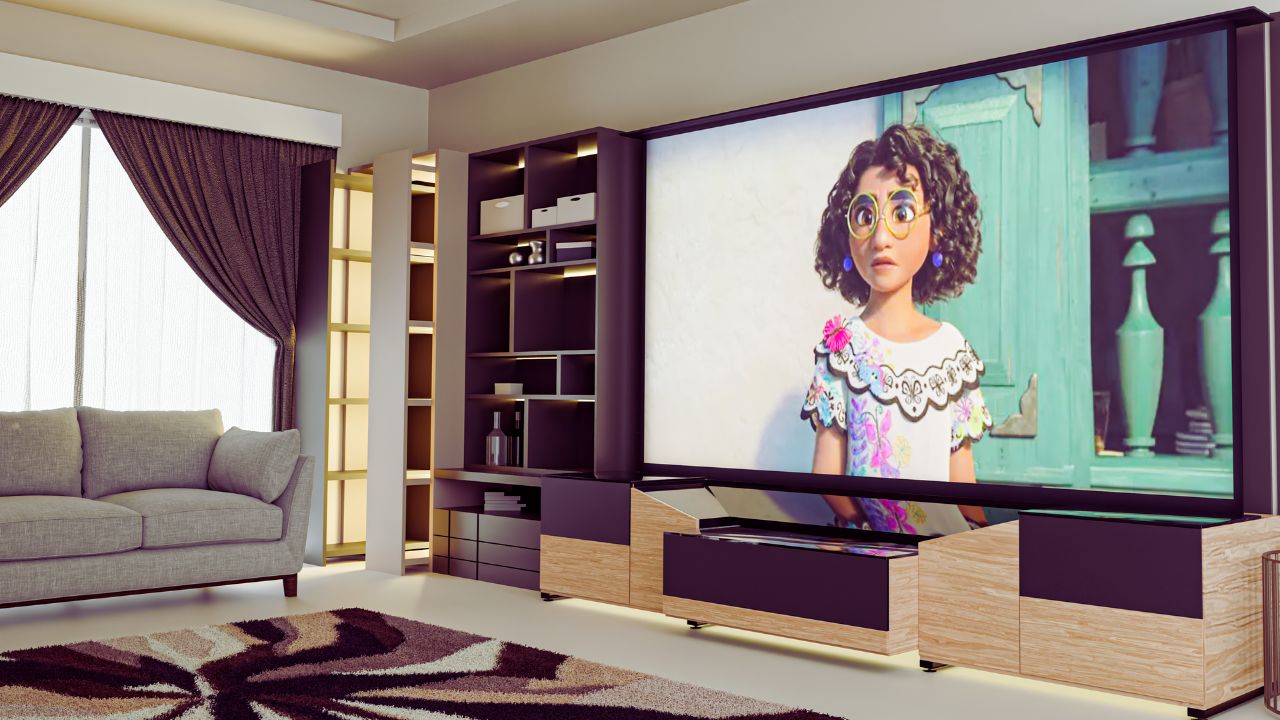
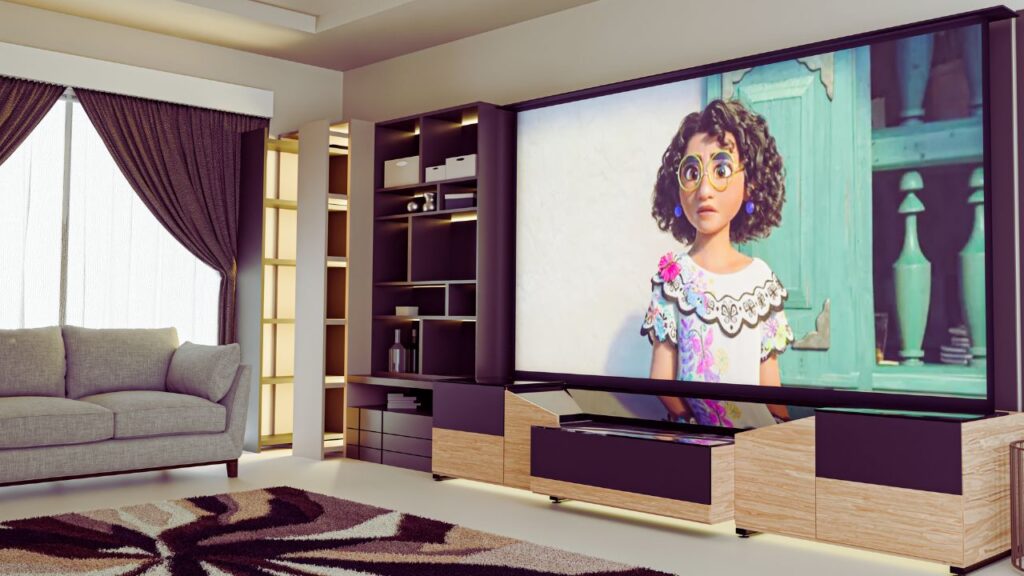
Creating the perfect home theater or entertainment setup? Think smart. A smart projector screen cabinet is a game-changer. It combines advanced tech with sleek, space-saving design. These cabinets elevate your viewing experience while keeping your space tidy.
Whether you’re a movie buff, gamer, or presenter, they’re a must-have. They seamlessly house your AV equipment. This is especially useful for ultra-short throw (UST) projectors. UST projectors need specific placement and space considerations.
Before buying, consider the cabinet type, features, and tech compatibility. This guide will help you choose wisely. Find the right cabinet to boost performance and style.
What is a Smart Projector Screen Cabinet?
A smart projector screen cabinet is a versatile furniture piece. It houses your projector, screen, and AV equipment. Unlike traditional cabinets, it’s packed with advanced features.
These include motorized screens, built-in storage, and UST projector compatibility. They’re perfect for modern homes. They blend style with functionality seamlessly.
Key Features to Look for in a Smart Projector Screen Cabinet
Choosing the right smart projector screen cabinet? Focus on these essential features. They ensure functionality, style, and a seamless setup.
1. Motorized Projector Screen
A motorized screen is a game-changer. It deploys and retracts with a button press. Look for quiet, durable screens for a smooth experience.
2. UST Projector Compatibility
UST projectors need specific placement. Ensure the cabinet supports UST projectors. This guarantees optimal image quality and performance.
3. Floor-Rising Design
Floor-rising cabinets save wall space. They’re perfect for rooms with limited walls. Ideal for unconventional layouts or smaller spaces.
4. Built-In Storage
Ample storage is a must. Look for adjustable shelves and cable management. Keep AV gear like soundbars and consoles organized.
5. Aesthetic Appeal
Your cabinet should match your décor. Choose modern, minimalist, or traditional designs. It should blend seamlessly with your interior.
6. Customization Options
Every space is unique. Custom solutions ensure a perfect fit. Adjust size, materials, and features to meet your needs.
Types of Smart Projector Screen Cabinets
Smart projector screen cabinets come in various styles. Each type suits different needs and spaces. Here’s a breakdown of the most popular options.
Motorized UST Projector Cabinet
Designed for ultra-short throw (UST) projectors. Ensures perfect placement and image quality. Often includes built-in cooling to prevent overheating.
Floor-Rising Projector Screen Cabinet
Ideal for rooms with limited wall space. The cabinet rises from the floor to reveal the screen. Perfect for multi-purpose or small rooms.
Custom AV Cabinets
Custom AV cabinets provide tailored solutions for those with specific requirements. In terms of size, design, and functionality, ensuring a perfect fit for your equipment and space.
Smart UST Projector Cabinet with Screen
An all-in-one solution. Combines a motorized screen with a UST-compatible cabinet. Great for hassle-free, complete setups.
Benefits of a Smart Projector Screen Cabinet
A smart projector screen cabinet is a game-changer. It combines functionality, style, and protection in one solution. Perfect for UST or traditional projectors, it enhances your setup. Key benefits Include:
Space-Saving & Organized Design
- No need for extra furniture.
- Built-in storage for AV gear, cables, and accessories.
Sleek & Modern Aesthetic
- Hides wires and equipment for a clean look.
- Blends seamlessly with any room decor.
Projector Protection
- Shields from dust, spills, and bumps.
- Extends the lifespan of your projector.
Enhanced Performance & Cooling
- Built-in ventilation prevents overheating.
- Ensures optimal performance at all times.
Convenience & Smart Features
- Motorized screens for easy use.
- Speaker compartments and cable management for a tidy setup.
Customization Options
- Tailored solutions to fit your space.
- Match your cabinet to your specific needs.
Key Considerations When Choosing a Smart Projector Screen Cabinet
Choosing the right smart projector screen cabinet can transform your home theater experience. But with so many options available, how do you pick the best one? Here’s a simple, step-by-step guide to help you make an informed decision.
Compatibility with Your Projector
Not all cabinets work with every projector. If you own an ultra-short throw (UST) projector, ensure the cabinet is designed for it. Some cabinets, like those from Aegis AV, offer universal compartments. These fit various UST projectors seamlessly.
Also, check the cooling system. A good cabinet provides filtered cool air to the projector’s intake. It should also extract hot air efficiently. This keeps your projector running smoothly and extends its lifespan.
Throw Ratio Matters
Projectors have different throw ratios. Brands like LG, Samsung, and Epson often use shorter throw ratios. This means the projector can be placed closer to the screen.
You might not need a motorized cabinet if your projector has a short throw ratio. However, always verify the throw ratio before buying. This ensures the cabinet design matches your projector’s needs.
Screen Size and Type
Think about the screen size you want. Most UST projectors work best with screens between 80-130 inches. Larger screens may require more adjustments. Smaller screens might not give you the cinematic feel you’re after.
Also, consider the cabinet’s screen type. A rising screen cabinet might be ideal if your room has a challenging ceiling or glass walls. Wall-mounted screens are another option for tight spaces.
Cooling Features
Projectors generate heat, especially during long movie marathons. A cabinet with advanced cooling features is a must. Look for systems that provide filtered cool air. These prevent dust buildup and keep your projector at the right temperature.
Proper cooling not only improves performance but also extends your projector’s life. It’s a small detail that makes a big difference.
Aesthetic Appeal
Your cabinet should look good in your space. Choose a design that matches your home theater’s style. Sleek, modern cabinets are popular for their clean look. But if your room has a traditional vibe, go for a classic design.
The goal is to blend functionality with beauty. A well-designed cabinet enhances your room’s overall look.
Additional Features
Some cabinets come with extra features to elevate your experience. Here are a few to consider:
- Built-in Speakers: Save space by using the cabinet’s speakers.
- Ambient Lighting: Add mood lighting for a cinematic feel.
- Smart Home Integration: Control your cabinet with voice commands or apps.
These features aren’t essential but can make your setup more convenient and enjoyable.
Real-Life Uses of a Smart Projector Screen Cabinet
A smart projector screen cabinet isn’t just for movies. It’s a versatile solution that fits seamlessly into different spaces. Here’s how you can use it:
Home Theater Setup
Turn your living room into a mini cinema. A retractable screen and hidden projector create a clean, high-end look.
Gaming Room
Level up your gaming with a massive, immersive display. With the press of a button, your screen is ready for action.
Office Presentations
Make meetings effortless with a clutter-free, professional setup. Impress clients and keep your space organized.
Educational Spaces
Ideal for classrooms and training rooms, offering a smooth, hassle-free way to display content.
Aegis AV: Unbeatable Custom AV Cabinet Solutions
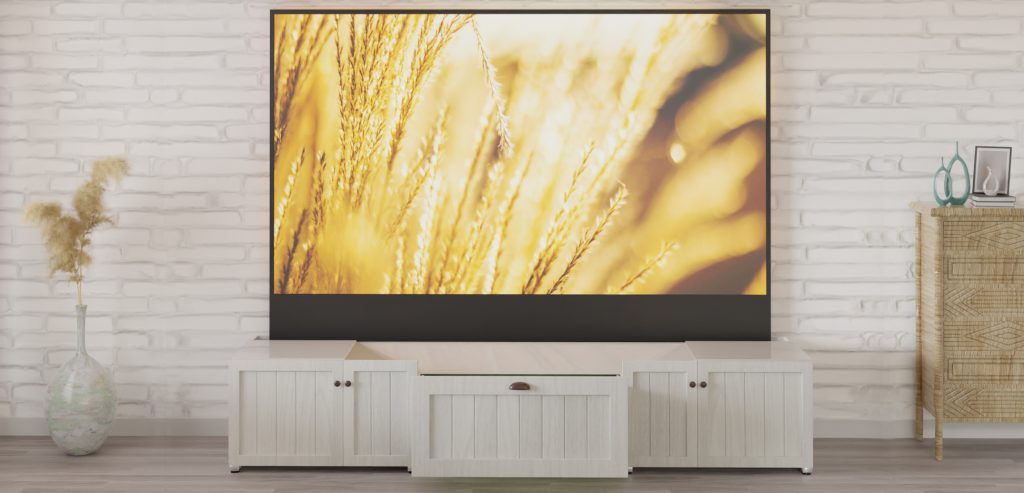
Aegis AV offers custom AV cabinets for unique needs. Their cabinets are designed for universal compatibility. They work with all UST projectors for optimal performance. Here are the key Features of Aegis AV Cabinets:
Universal Compatibility
- Fits all UST projectors on the market.
- Ensures seamless integration with your setup.
Advanced Cooling Systems
- Custom cooling patterns for your projector.
- Keeps temperatures ideal for long-lasting performance.
Comprehensive Storage
- Ample space for large equipment like McIntosh.
- Keep your AV gear organized and accessible.
Aesthetic Versatility
- Choose from styles, colors, and glass options.
- Matches any home theater décor perfectly.
The UST Projector Cabinet Aegis Andromeda
A top-tier option with advanced features:
- Moving UST compartment for flexibility.
- Turntable shelves and LP organizer.
- Sonos Arc integration and rising screen.
- Optional built-in speakers and ambient lighting.
Why Choose Aegis AV?
- Tailored solutions for your specific needs.
- Combines functionality, style, and performance.
- Elevates your home theater experience.
Aegis projector cabinets are a premium choice. They offer customization, cooling, and style. Perfect for any home theater enthusiast!
FAQs
What Is The Difference Between A Motorized And Manual Projector Screen Cabinet?
Motorized projector screen cabinets deploy and retract screens through an automated system, which can be operated by a simple push of a button or the use of a remote. This feature ensures great convenience when used and protects against damage to the screen.
A manual cabinet requires a user to pull out or store the screen physically. While they’re generally more affordable, they may not be as convenient for repeated use.
Can Any Projector Be Used With A Smart Cabinet?
Not all projectors are compatible with every cabinet. UST projectors need special cabinets. The cabinets are configured in respect to the throw distance and angular configuration of the projector. Always verify the cabinet specifications with regard to the projector model.
How Do I Know The Size Of My Projector Screen Cabinet?
It depends on your screen and projector. Proper measuring of the area is very much needed.
The cabinet must accommodate the size of your screen, all the while taking into consideration good viewing angles. It should also be able to take the throwing distance of your projector so there is no compromise on the quality of an image.
Are Smart Projector Screen Cabinets Difficult To Install?
Most cabinets are meant for easy assembly. Basic models just require placement and plugging them in. Professional installation may be recommended for added features like dedicated motorized screens or mounted speakers. This assures that everything is running smoothly and on the safe side.
Do Smart Cabinets Come With In-Built Speakers?
Some high-end cabinet models come with integrated speakers or sound systems. However, many cabinets are designed to work with other existing audio setups.
If sound quality is essential to you, pair your cabinet with a separate sound system. This is the way to go for a true cinematic audio experience.
Transform Your Space Today
A smart projector Screen cabinet enhances your space while keeping things neat. Features like motorized screens, UST compatibility, and built-in storage add both function and style.
Before buying, think about your needs and explore customization options. Brands like Aegis AV offer custom AV cabinets tailored to your space.
